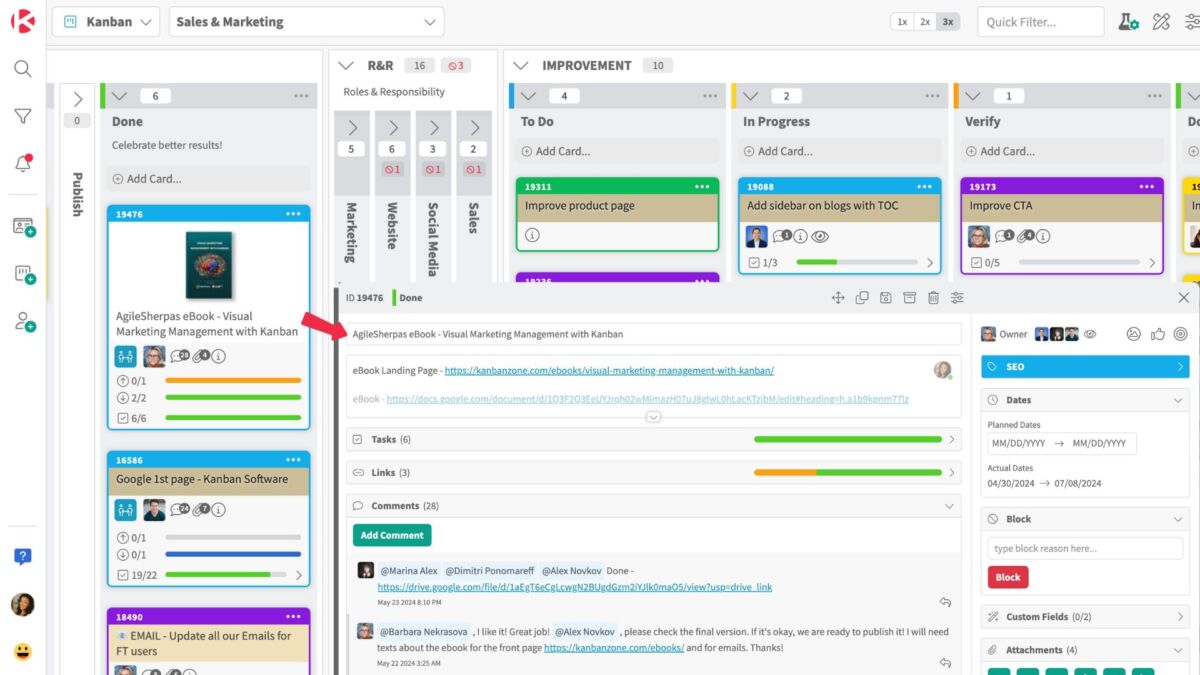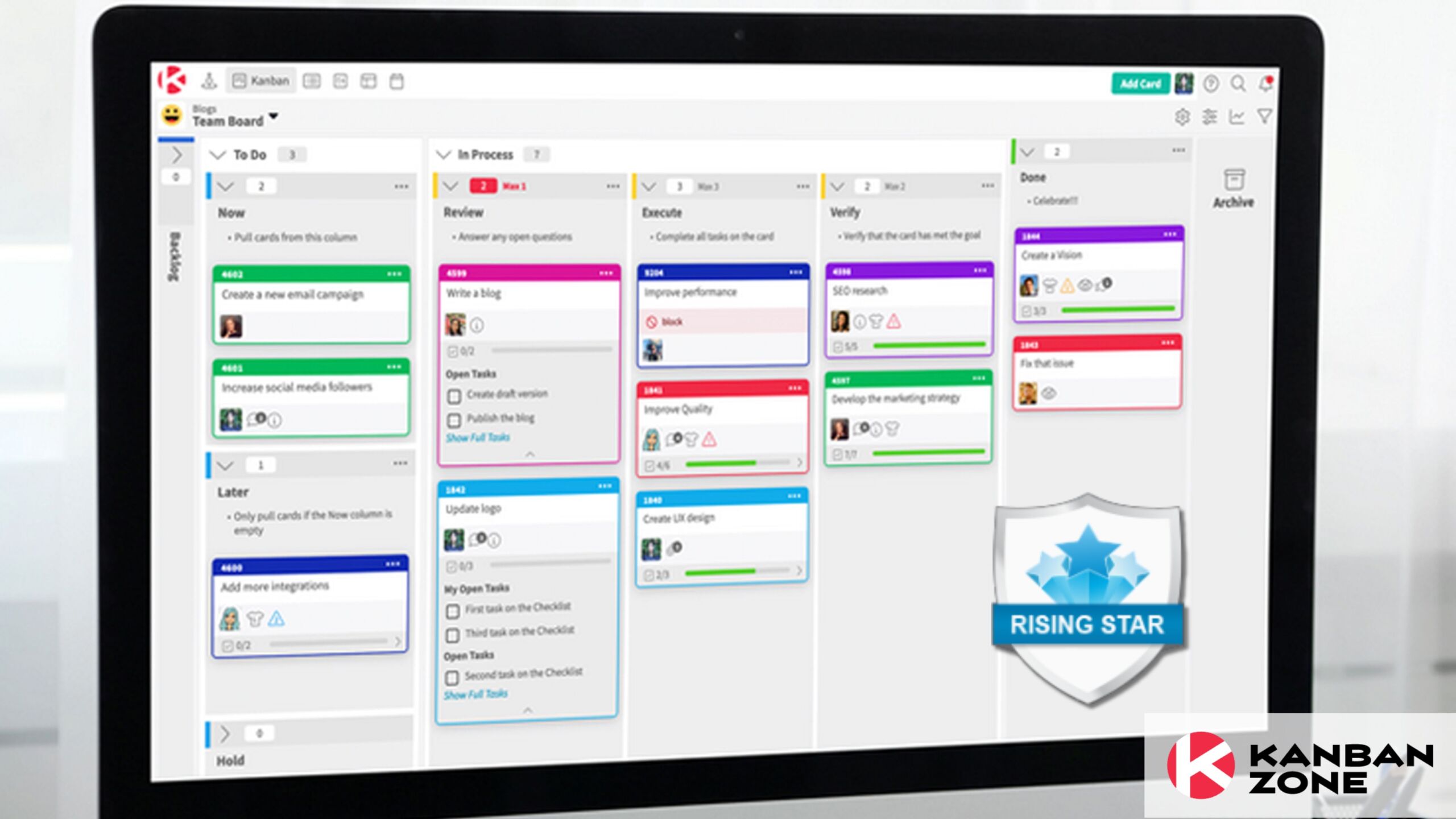
Picture this. You manage a team of intellectually diverse individuals who work remotely and have strong opinions about how to get tasks done. The logic behind each team member’s work methods is sound, but you often find that they work inefficiently due to the differences in how everyone approaches work. This causes dips in productivity, leaving you with the challenging task of ensuring each team member dutifully completes their tasks. What do you do?
This is where workload management helps immensely. As the name suggests, workplace management is about boosting the overall efficiency of a team. Methods such as Kanban, that revolve around careful planning, organizing, and task delegation to capitalize on everyone’s unique skill sets, can be very effective.
What is Workload Management?
Workload management is the process of organizing work in a way that makes optimal use of human resources. This is achieved by planning work in a way that makes full use of team member strengths to minimize time wastage, raising overall productivity in the process.
The crux of workload management is preventing teams from feeling overburdened by goals they feel they are not equipped to achieve. This requires the adjustment of workloads and setting achievable goals that balance their urgency to company objectives with how easy the assignee finds them.
Why is Workload Management Important to Improve Team Efficiency?
It Improves Communication Between Team Members
One of the main reasons why workload management helps teams become more efficient is communication. The core idea here is obvious – the clearer the communication between team members, the more likely it is for workloads to be managed effectively because of a reduction in unnecessary back and forth.
What’s less obvious is the need for communication improvements across numerous channels of communication. The use of videos to train and motivate team members to improve their communication skills helps with this. If this is executed well, team members can use multiple communication channels ranging from in-office project management software to emails and more. This results in streamlined and more efficient work for everyone.
It Helps Teams Avoid Needing Excessive Resources
Would you rather improve efficiency with or without exceeding budgets? Most people would go for the second option for obvious reasons – and this requires managing workloads carefully.
Effective workload management ensures solid control of costs so that resources can be used as efficiently as possible. This includes everything from accurately estimating costs to making optimal use of available resources so that budgets aren’t exceeded.
Ask yourself – does the team understand how to use the available resources such as communications project management software? Are there obstacles preventing the team from learning how to use resources optimally? Is there a misalignment between the actual budget available to the team and the budget they believe they have to work with?
The answers to these questions help with eliminating workplace efficiency and maximizing productivity simultaneously.

It Enables Teams To Adhere To Deadlines
The hallmark of workplace efficiency is getting things done on time. No matter what industry you’re in, chances are you’ll be more efficient by adhering to task deadlines as part of a clear timeline.
This begs the question: what’s the best way for teams to adhere to deadlines? We recommend considering project management templates to aid workplace collaboration and ensure deliverables are sent on time.
These kinds of templates help teams to prioritize tasks not only in terms of what’s most important but also what can be completed quickly. This enables teams to manage their time more efficiently, as they prioritize their work dynamically and give each task the time it needs.
It Boosts Work Satisfaction Among Teams
Work satisfaction is intrinsically linked to efficiency. Happy employees find ways of doing things quickly without sacrificing quality – and as work satisfaction increases, teams feel more and more motivated to work harder and find ways to get things done efficiently.
This makes it vital to use tools that help with planning and tracking team workloads to prevent team members from having to unnecessarily multitask and divert their focus on things they do not specialize in. The result is a healthy work-life balance for teams, which is a necessary precursor for productivity and efficiency. The likelihood of the team feeling burned out reduces as a result.
For example, imagine conducting call center training without having procedures in place to manage the workload of each operator. In this scenario, the quality of the operators’ conversations with stakeholders is likely to diminish rapidly if they’re forced to handle an excessive volume of calls without any support.
Workload management prevents this sort of scenario from occurring and safeguards team morale, resulting in a positive work culture and reduced turnover.
The 5 Aspects Of Workload Management To Improve Team Efficiency
1. Timeline Clarification
One of the biggest ways in which workload management increases team efficiency is by clarifying timelines. Setting clear deadlines for teams helps them understand when to achieve goals and plan accordingly. Moreover, it helps managers communicate deliverables to teams clearly so that everyone is aware of their roles in relation to the time available to complete tasks.
Clarifying the timeline of work at any workplace is a great way for team members to align their work methods and become more efficient as a collective unit. This often relies on the use of workflow visualization techniques to organize data in a way that enables the optimal utilization of time and the unique skills of each team member.
2. Resource Assessment
Another key aspect of workload management that helps teams become more efficient is assessing the skills of each team member in relation to tasks within projects. The key is to match team members with the right tasks so that everyone has the right amount and nature of work to do based on their capabilities.
This approach fosters collaboration and learning because teams that identify and leverage each team member’s strengths are well-positioned to fill gaps, enabling optimal resource utilization and allocation.
3. Task Delegation With Team Specializations In Mind
The reason why task delegation helps teams become more efficient is obvious to most people: the better the distribution and balance of workload among team members, the more likely it is for the work to be completed quickly and to a high standard.
What’s less obvious is the importance of delegating tasks according to what employees are good at (their specializations). Delegating tasks to team members according to their strengths is a great way to make them feel empowered in their roles. Moreover, it ensures accountability and ownership of the work that needs to be done.
This prevents the need for micromanaging team members (as they essentially manage themselves), freeing up time for team leaders/managers to focus on more important tasks. This, in turn, increases overall efficiency across the company.

An online tool for efficient collaboration and task management? Find out how Kanban Zone can make it easier for your team to keep track of task progress and promote accountability for better team efficiency.
4. Effective Progress Tracking
Progress tracking is vital for any team looking to operate more efficiently. For instance, regular process tracking helps marketing teams track metrics like social media engagement or content impressions to identify where they are lagging behind.
This insight enables a more efficient allocation of resources and is crucial to making the necessary strategy adjustments so that campaigns stay on track.
Enterprise meeting management software is a great way to monitor and track progress as it often includes features for setting agendas, assigning tasks, and tracking their completion – all of which are integral to maintaining a clear overview of a project’s status.
5. Continuous Improvement Through Results Analysis
Identifying opportunities to improve workload management is crucial for teams looking to work more efficiently because it helps them evaluate and learn from their experiences while also staying motivated.
The idea is for teams to learn how to spot areas of improvement on the fly so that work becomes an iterative process and best practices are established. At the same time, it is also important to analyze work and spot inefficiencies, such as the need to gain approval from a hierarchy of managers (which can act as a bottleneck to workflows).
Summary
Workload management is a cornerstone of team efficiency and is best achieved through visual collaboration platforms that are specifically designed for this purpose.
It starts with clarifying the project scope and timeline to set a clear direction and prevent an unnecessary expansion of the project scope.
Finally, assessing what resources and skills are required by visualizing resource allocation helps teams identify the necessary skills and tools available to meet project demands and ensure effective task delegation. This makes it possible to gain in-depth insights into workflow efficiencies and improve workload management, thereby improving team efficiency drastically.
This was a guest blog. Please review our guest blog disclaimer.
Learn to Work Smarter, Not Harder!
Get our top articles weekly.







